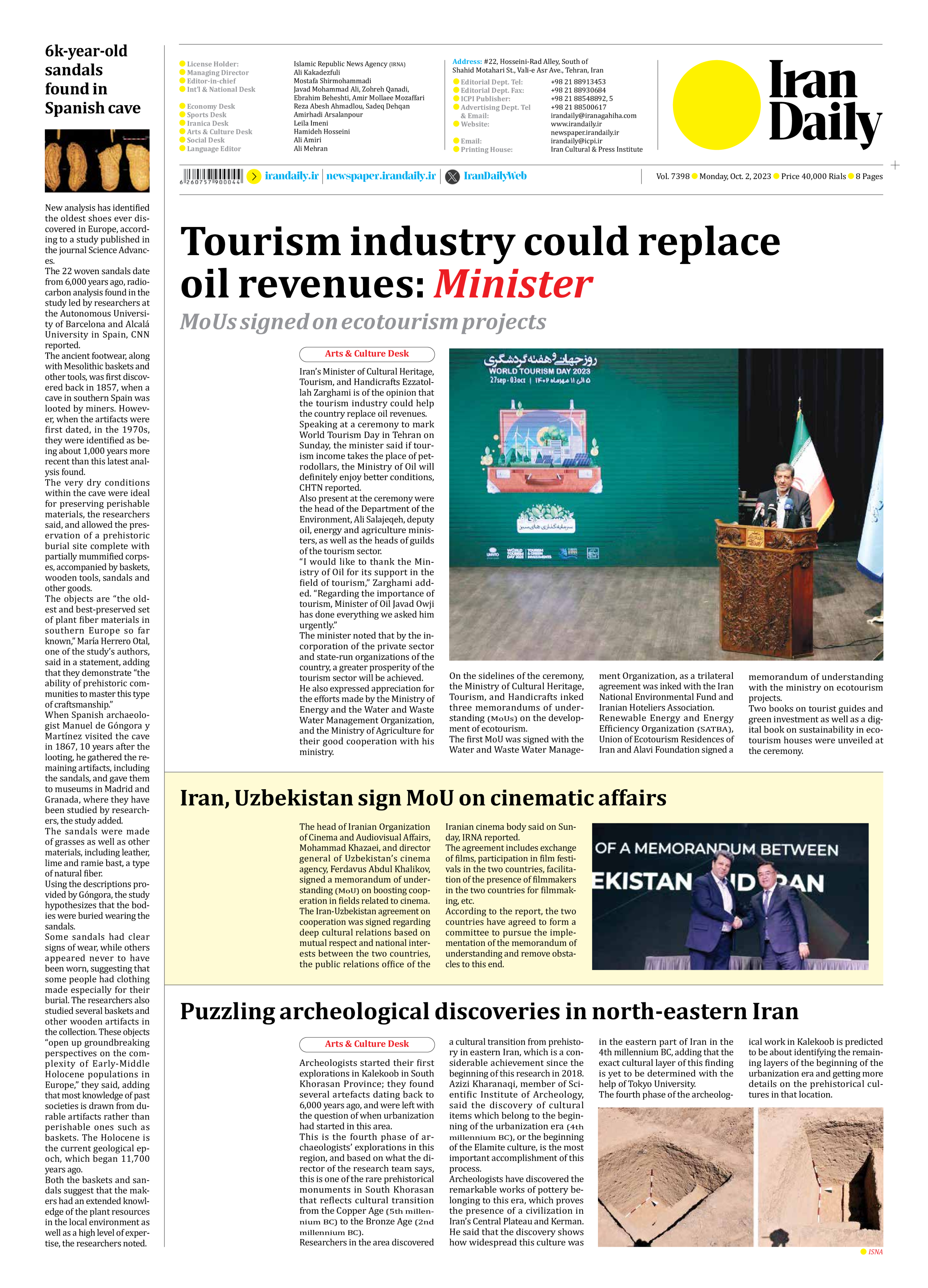
6k-year-old sandals found in Spanish cave
New analysis has identified the oldest shoes ever discovered in Europe, according to a study published in the journal Science Advances.
The 22 woven sandals date from 6,000 years ago, radiocarbon analysis found in the study led by researchers at the Autonomous University of Barcelona and Alcalá University in Spain, CNN reported.
The ancient footwear, along with Mesolithic baskets and other tools, was first discovered back in 1857, when a cave in southern Spain was looted by miners. However, when the artifacts were first dated, in the 1970s, they were identified as being about 1,000 years more recent than this latest analysis found.
The very dry conditions within the cave were ideal for preserving perishable materials, the researchers said, and allowed the preservation of a prehistoric burial site complete with partially mummified corpses, accompanied by baskets, wooden tools, sandals and other goods.
The objects are “the oldest and best-preserved set of plant fiber materials in southern Europe so far known,” María Herrero Otal, one of the study’s authors, said in a statement, adding that they demonstrate “the ability of prehistoric communities to master this type of craftsmanship.”
When Spanish archaeologist Manuel de Góngora y Martínez visited the cave in 1867, 10 years after the looting, he gathered the remaining artifacts, including the sandals, and gave them to museums in Madrid and Granada, where they have been studied by researchers, the study added.
The sandals were made of grasses as well as other materials, including leather, lime and ramie bast, a type of natural fiber.
Using the descriptions provided by Góngora, the study hypothesizes that the bodies were buried wearing the sandals.
Some sandals had clear signs of wear, while others appeared never to have been worn, suggesting that some people had clothing made especially for their burial. The researchers also studied several baskets and other wooden artifacts in the collection. These objects “open up groundbreaking perspectives on the complexity of Early-Middle Holocene populations in Europe,” they said, adding that most knowledge of past societies is drawn from durable artifacts rather than perishable ones such as baskets. The Holocene is the current geological epoch, which began 11,700 years ago.
Both the baskets and sandals suggest that the makers had an extended knowledge of the plant resources in the local environment as well as a high level of expertise, the researchers noted.







